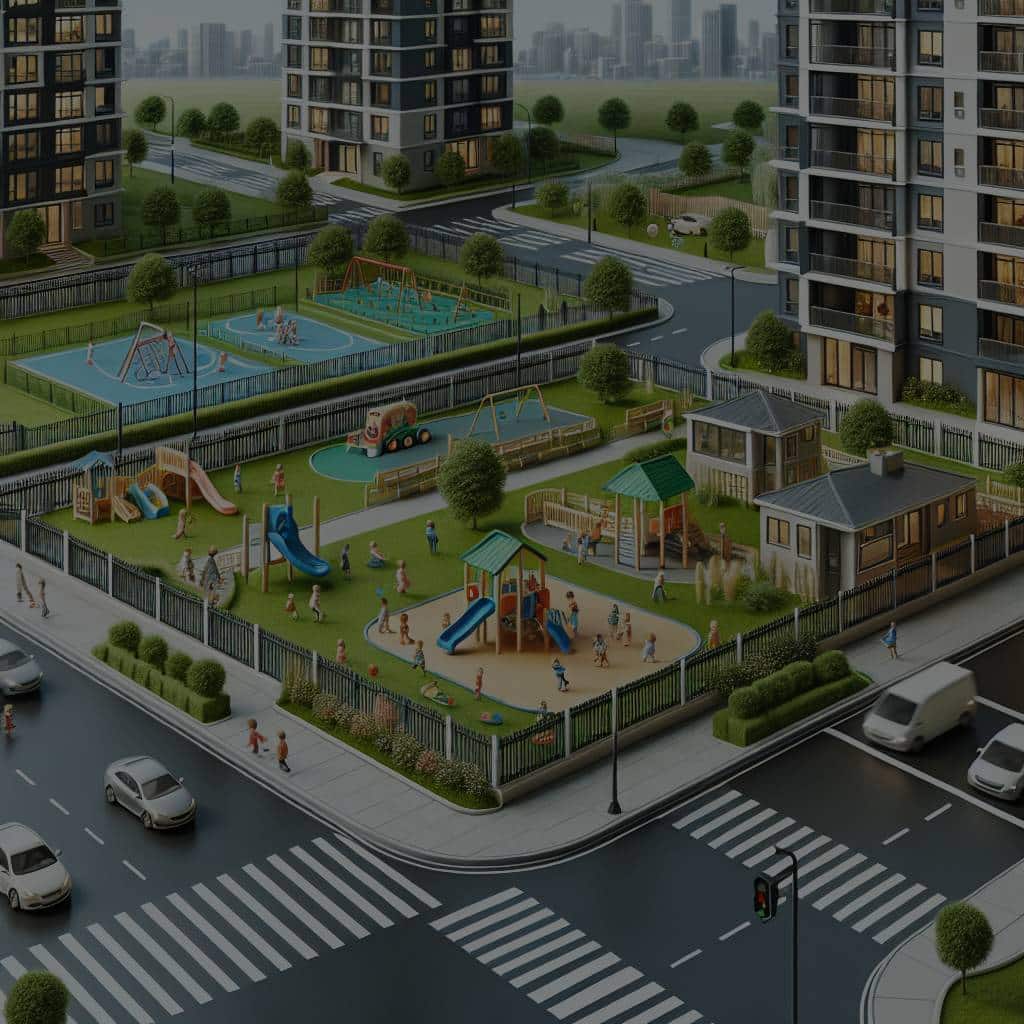How to Design Child-Friendly and Safe Living Environments in Urban Real Estate?

In the hustle and bustle of urban life, one aspect that often goes overlooked is the importance of designing child-friendly and safe living environments. As our cities become more populated, and space becomes a premium, it’s crucial for urban development and design to consider the needs of our youngest citizens. This doesn’t just mean constructing playgrounds, but also ensuring the overall environment including housing, public spaces, and community areas are designed to promote health, safety, and quality of life for children. Let’s delve deeper into this topic, particularly focusing on the scholar research, the role of Crossref in publicizing these studies, and some key examples from cities like China.
The Scholarly Approach to Child-Friendly Urban Design
In recent years, there has been an increasing focus on the role of urban design in promoting child health and well-being. Scholars from various disciplines, including urban planning, public health, and environmental studies, have been exploring how the built environment impacts children’s lives.
Also to read : What Are the Financial Impacts of the UK’s Energy Performance Certificates on Property Values?
Studies have shown the importance of providing children with accessible, safe, and stimulating spaces to play and explore. They have also highlighted how the quality of housing can have a significant impact on children’s health and development. For instance, poor ventilation and lighting can lead to respiratory problems and hinder children’s studying abilities, while the lack of soundproofing can disrupt sleep, affecting both physical health and cognitive development.
In densely populated cities, the need for child-friendly design becomes even more pressing. Urban designers need to consider children’s needs and perspectives in creating spaces that are safe, stimulating, and supportive of their growth and development.
Also read : How to Use Predictive Maintenance to Improve the Lifespan of Real Estate Assets?
The Role of Crossref in Disseminating Child-Friendly Urban Design Studies
Crossref plays a crucial role in disseminating these scholarly insights to a wider audience. This not-for-profit organization works to make scholarly content easy to find, link, cite, and assess, making it a valuable resource for urban designers, city planners, and policymakers.
Through Crossref, researchers and practitioners can access a wealth of information on child-friendly urban design. They can find studies examining the impact of urban design on children’s health, the benefits of incorporating green spaces in urban areas, or the strategies for creating safe and interactive public spaces for children.
With such information at their fingertips, urban designers can make informed decisions that prioritize children’s needs. They can ensure that their designs not only look good but also contribute to a healthier, happier urban environment for children.
Examining China’s Approach to Child-Friendly Urban Design
China’s rapid urban development provides a fascinating case study for child-friendly urban design. With its burgeoning cities and the government’s emphasis on improving living standards, China has been making significant efforts to create child-friendly urban environments.
In many Chinese cities, the design of public spaces, housing, and community areas is being rethought to accommodate children’s needs. For example, the city of Shanghai has implemented a policy to ensure that all newly built residential areas have kindergartens and primary schools within walking distance. This not only provides convenience for families but also helps to create a sense of community within the neighborhood.
Furthermore, cities like Beijing and Guangzhou have been promoting the construction of "green" and "blue" spaces – parks, gardens, water bodies, and other natural areas – within urban environments. These spaces offer children opportunities for outdoor play and interaction with nature, which are essential for their mental and physical health.
While China’s urban design strategies have their own challenges and are continually evolving, they offer valuable lessons for other cities around the world.
The Future of Child-Friendly Urban Design
Looking ahead, it’s clear that the need for child-friendly urban design will only continue to grow. As our cities expand and more families choose to live in urban areas, we must ensure that our built environment supports the health and well-being of all community members, including children.
This means creating spaces that are not just visually appealing but also functional, safe, and beneficial for children’s development. It means considering how every design decision – from the location of schools and parks to the layout of residential areas – impacts children’s daily lives.
As we move forward, let’s remember the importance of designing our cities with our youngest citizens in mind. Let’s leverage the wealth of scholarly research available, particularly through platforms like Crossref, and learn from the strategies of cities like China. Together, we can create urban environments that are truly child-friendly and safe.
The Interconnection of Urban Planning and Public Health in Child-Friendly Design
The sphere of urban planning is no longer solely focused on housing developments and infrastructure. Increasingly, it is integrating public health considerations into its strategies, particularly concerning children’s living environments. Urban development, according to the United Nations Human Settlements Programme, should prioritize creating spaces that promote physical activity, accommodate children’s needs, and foster their well-being.
An important aspect of this approach includes affordable housing designs that are child-friendly. High-quality residences with adequate lighting and ventilation, soundproofing, and space for children to move and play are essential. These elements should not be seen as luxuries but as fundamentals in human-centered design.
Moreover, urban renewal projects should consider the introduction of green spaces within residential areas. Providing children with direct access to nature has been proven to enhance their mental health and stimulate physical activity. Plus, it can act as a mitigation strategy against the impacts of climate change in urban areas, creating more sustainable and resilient cities.
Leveraging data sources like Google Scholar and Scholar Crossref could be instrumental in integrating public health considerations into urban planning. These platforms provide a plethora of research that can inform the creation of child-friendly living environments in urban real estate.
Practical Applications and Moving Forward
To make the theoretical concepts of child-friendly urban design a reality, practical applications need to be implemented. Key examples, like those found in Chinese cities, offer valuable lessons. Elements such as ensuring accessibility to schools within residential areas, and the incorporation of ‘green’ and ‘blue’ spaces are practical strategies that can be adopted globally.
However, the journey towards truly child-friendly urban environments requires a consistent commitment to learning and adaptation. Strategies should be continuously evaluated and refined, leveraging the richness of scholarly research available and emerging data sources.
It is also crucial to remember that children themselves are valuable stakeholders in these conversations. Their input into what makes a living environment "friendly" and "safe" can provide unique insights and ensure that the results are truly reflective of their needs.
Ultimately, the goal should be to create high-quality urban areas where children are not just accommodated but are actively thriving. This means recognizing the crucial intersection of urban planning and public health and making children’s well-being a priority in design decisions.
In conclusion, designing child-friendly and safe living environments in urban real estate is not just a necessity but an obligation. As we strive to create more sustainable and inclusive cities, the needs of our youngest citizens cannot be ignored. By leveraging platforms like Google Scholar and Scholar Crossref, learning from practical applications, and maintaining a commitment to continuous improvement, we can make strides towards this goal. Together, let’s shape our cities into spaces where every child can thrive.
